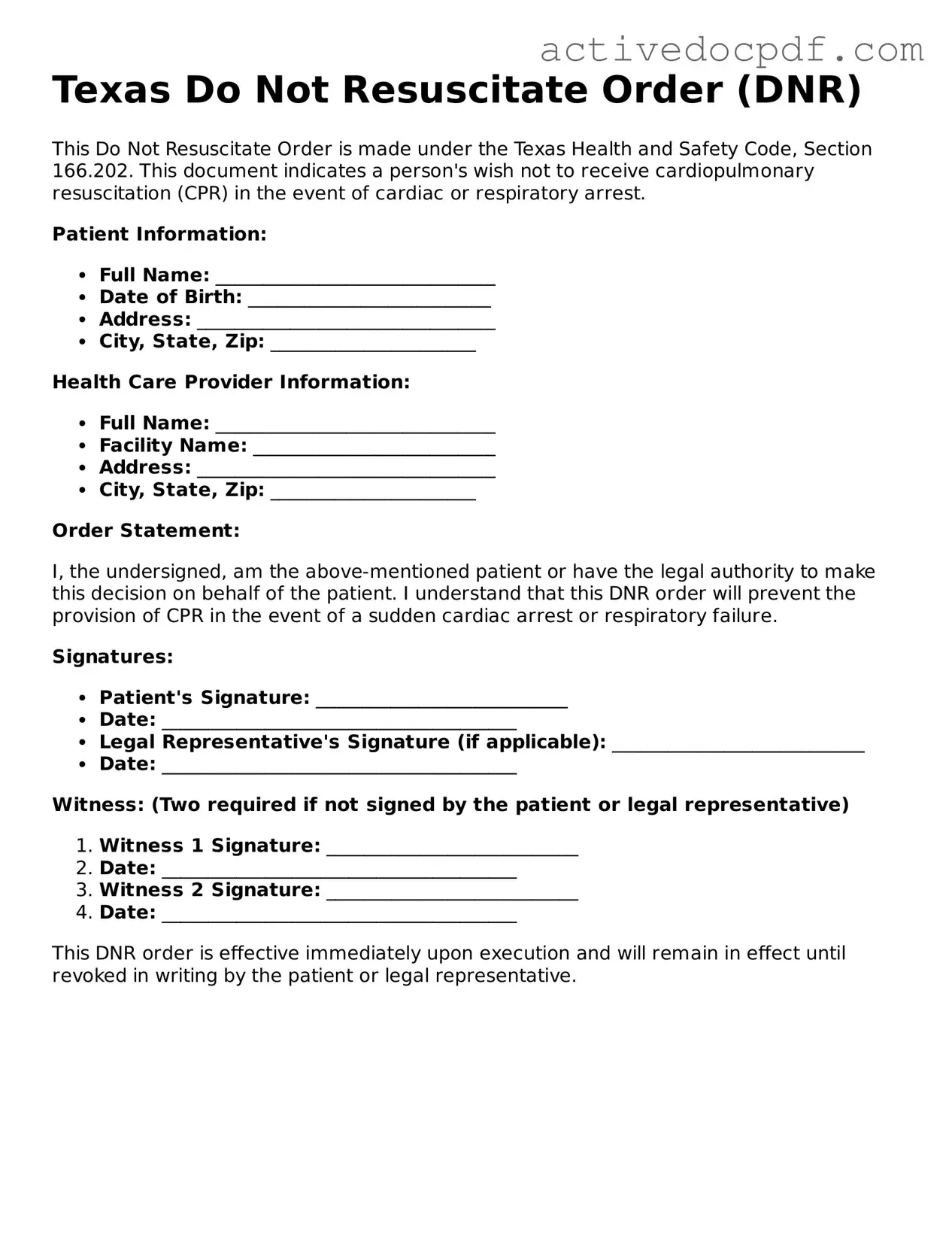What is a Texas Do Not Resuscitate Order (DNR)?
A Texas Do Not Resuscitate Order is a legal document that instructs medical personnel not to perform cardiopulmonary resuscitation (CPR) if a patient stops breathing or their heart stops beating. This order is typically used by individuals with serious health conditions who wish to avoid aggressive life-saving measures.
Who can request a DNR in Texas?
In Texas, a DNR can be requested by a competent adult, or by a legally authorized representative for an adult who is unable to make their own medical decisions. This could include family members or legal guardians. Additionally, healthcare providers may also initiate discussions about DNR orders with patients and their families.
To complete a DNR form in Texas, follow these steps:
-
Obtain the official Texas DNR form from a healthcare provider or online resources.
-
Fill out the form, providing necessary details such as the patient's name and medical condition.
-
Ensure that the form is signed by the patient or their authorized representative.
-
Have the form signed by a physician, which is required for it to be valid.
The DNR form should be kept in a location that is easily accessible to medical personnel. It is advisable to keep a copy in the patient’s medical records, at home, and with any caregivers. Additionally, consider wearing a medical alert bracelet that indicates the presence of a DNR order.
Is a DNR order valid in all healthcare settings?
Yes, a DNR order is valid in all healthcare settings in Texas, including hospitals, nursing homes, and emergency medical services. However, it is important that the order is properly completed and signed to ensure its enforcement across different settings.
Can a DNR order be revoked?
Yes, a DNR order can be revoked at any time by the patient or their authorized representative. To revoke the order, simply destroy the original DNR form and inform medical personnel of the change in wishes. It is also advisable to provide a new document that clearly states the revocation.
What happens if a DNR order is not followed?
If a DNR order is not followed, it can lead to legal complications for healthcare providers. Patients or their families may have grounds for legal action if they believe their wishes were not respected. It is crucial for all parties involved to communicate clearly about the DNR status to avoid misunderstandings.
Can a DNR order be combined with other advance directives?
Yes, a DNR order can be part of a broader advance directive, which may include a living will or healthcare power of attorney. These documents work together to outline a patient's wishes regarding medical treatment and end-of-life care. It is beneficial to discuss all advance directives with healthcare providers to ensure comprehensive care planning.
How does a DNR affect other medical treatments?
A DNR order specifically addresses resuscitation efforts. It does not affect other medical treatments, such as pain management or comfort care. Patients will still receive necessary medical care and interventions, except for those explicitly stated in the DNR order.
For more information about DNR orders in Texas, consider visiting the Texas Department of State Health Services website or consulting with a healthcare provider. Local hospitals and legal aid organizations may also provide resources and guidance on completing and understanding DNR orders.
